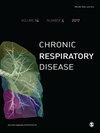Rehabilitation pre- and post thoracic surgery: Progress and future opportunities.
IF 3.5
3区 医学
Q2 RESPIRATORY SYSTEM
引用次数: 0
Abstract
The rehabilitation needs of patients undergoing thoracic surgery are evolving over the last two decades. Surgical management is being undertaken for older patients and those with increased co-morbidities, which are established risk factors for functional limitations peri-operatively. Thus, there is a growing need to understand the implications of pre-operative function, peri-operative course and preand post-operative rehabilitation strategies. This special collection of articles highlights keys areas in preand postthoracic surgical rehabilitation focusing on principles of frailty, skeletal muscle function, gait, balance, physical activity levels, and surgical outcomes. A narrative review by Daniel Langer summarizes the landscape of rehabilitation in thoracic surgery focusing on interventions that aim to optimize physical function preoperatively and recovery in the post-operative period. This review highlights that the majority of the evidence is in the areas of thoracic oncology and lung transplantation. It also reinforces that rehabilitation programs can be beneficial in improving skeletal muscle function, exercise capacity, quality of life, and functional recovery, but there remains a lack of guidelines with respect to training regimens, duration and referral pathways. The review identifies gaps that could be addressed in the future including opportunities for tele-rehabilitation, web-based activity counselling, and rehabilitation strategies beyond the immediate post-operative period. An article by Hanada et al. extends our knowledge on the importance of pre-operative physical function. Hanada and colleagues demonstrate in a prospective multicentered study of 364 older adults (> 65 years) undergoing elective surgical resection for lung cancer in Japan, that a reduced Short Physical Performance Battery (SPPB < 10 out of 12) was associated with post-operative pulmonary complications. The SPPB captures three functional domains (balance, gait speed and chair stands), which have been shown to be important elements of physical and lower extremity function predictive of surgical outcomes in gastrointestinal and lung transplant populations. The premise is pre-operative physical fitness correlates with cardiorespiratory, musculoskeletal, and physiological reserve that can help mitigate surgical stressors. Pre-operative physical function can help with earlier post-operative mobilization, improved airway clearance and ventilatory mechanics that can help reduce postoperative pulmonary complications. Similarly, a study by Roy et al. highlights the importance of underlying chronic lung disease on post-surgical outcomes, given the high prevalence of chronic obstructive pulmonary disease (COPD) in patients undergoing surgical lung cancer resection. Of the 1126 patients included in their study cohort, 672 (60%) had COPD. The authors highlight that following surgical lung cancer resection, patients with COPD are at higher risk of all cause morbidity, including risk of post-operative pneumonia and prolonged air leak, given risk factors such as active smoking, diminished胸外科手术前后的康复:进展和未来的机会。
本文章由计算机程序翻译,如有差异,请以英文原文为准。
求助全文
约1分钟内获得全文
求助全文
来源期刊

Chronic Respiratory Disease
RESPIRATORY SYSTEM-
CiteScore
5.90
自引率
7.30%
发文量
47
审稿时长
11 weeks
期刊介绍:
Chronic Respiratory Disease is a peer-reviewed, open access, scholarly journal, created in response to the rising incidence of chronic respiratory diseases worldwide. It publishes high quality research papers and original articles that have immediate relevance to clinical practice and its multi-disciplinary perspective reflects the nature of modern treatment. The journal provides a high quality, multi-disciplinary focus for the publication of original papers, reviews and commentary in the broad area of chronic respiratory disease, particularly its treatment and management.
 求助内容:
求助内容: 应助结果提醒方式:
应助结果提醒方式:


